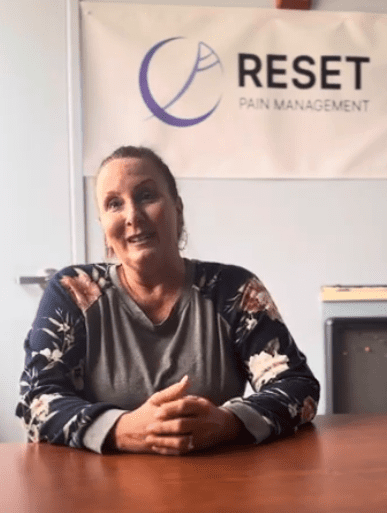Specialty Treatment For
Shoulder pain is a common issue and affects close to 5,000,000 new patients a year. Shoulder pain can solely affect the joint or the muscles, tendons, and ligaments that support the joint. However, the pain can also stem from an issue with a combination of joint, muscles, tendons, or and ligaments in the area.

We Work To Help You Get Your Life Back With Our New, Innovative Treatment
Minimally Invasive Treatment
Non-Narcotic & Steroid Free
97% Feel Immediate Relief
Treat Your Today
Shoulder pain restricts your ability to do essential things like go grocery shopping and vacuum your home. With Reset Injections, we aim to give you the ability to run your errands and live your life how you want.
Get In TouchRegardless of Your Pain, We Are Confident That We Can Treat Your Symptoms
We have treated over 2,000 patients using our proprietary treatment with all different types of pain and discomfort ranging from neuropathy all the way to cancer pain and everything in between. If you have pain or discomfort, we are here to help!
Darlene Trujillo
Patient that struggles with migraines talks about how she found relief with Reset treatment

Who Is Dr. ElKhoury?
Dr. ElKhoury has been practicing medicine for over 40 years. His research and discoveries have helped shape the medical industry we see today - he has created techniques and protocols for knee replacements, liver transplants, and much more that are still currently the industry standard.
Dr. Elkhoury is a nationally renowned expert in pain management who completed and published extensive research on various pain management topics. He is published in prestigious peer-reviewed journals like The New England Journal of Medicine and Anesthesiology. He won awards for the quality of his research on peripheral pain receptors. Dr. Elkhoury served six years as the director of the pain clinic at UCLA and the Cancer Pain clinic at UCLA, where he was involved in treating patients with complex pain. Dr. Elkhoury was not just the director; he was also teaching while supervising the pain management residents and interns. Additionally, he was the Director of Anesthesiology for the liver transplant department at UCLA and St. Vincent Medical Center
Decades of Experience in Pain Management
Patients Treated
Years of Experience
Medical Publications
Treat Your Shoulder Pain Today!
We all deserve to be able to eat dinner and comb our hair without experiencing pain. Live your life to its fullest. Schedule an appointment today.


